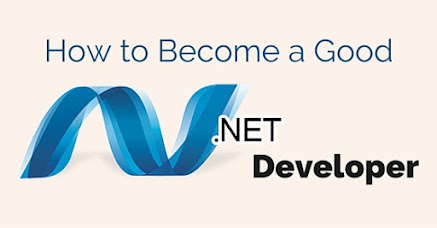In 2021, .NET developers are in high demand. The average salary of such a professional exceeds $95,000 per year. That’s why many college students are considering becoming web programmers. Meanwhile, other IT specialists and independent professionals are thinking about switching careers to pursue a highly demanded opportunity.
Becoming a .NET developer takes a while. To achieve career goals, you need to have a clear understanding of the steps to take. While it may seem hard at first, pursuing a career in web development is always gratifying.
Let’s take a look at the first steps to take to becoming a successful .NET developer from scratch.
Skills You Need
When you decide to become a .NET developer, you need to master essential skills. According to the dedicated .NET developers staffing company, Allshore, these skills are:
- .NET Basics
- C#
- .NET
- ·NET MVC
- SQL Server
- WCF
- Visual Studio
- JavaScript
- jQuery
- CSS
- Web API
- Entity Framework
- LINQ
- AngularJS
- NodeJS
While the latter five aren’t exactly essential, they can be highly useful when climbing the career ladder. If you don’t have any of the abovementioned skills yet, don’t worry. If you have any programming experience at all, the rest of the skills will come naturally. You just have to make time for in-depth studying and practicing.
Step#1: Start with C#
The basics of .NET development are C# language and Visual Studio IDE. Thankfully, C# is one of the easiest and intuitive languages to learn. Even if you’ve never done any programming before, this language is likely to come easy.
If you are starting from scratch, don’t rush through the language courses. Allow yourself sufficient time to become extremely good in C#. The rest of the skills will follow with much more ease.
Step#2: Continue with Visual Studio IDE
Visual Studio IDE (Integrated Development Environment) is the program both newbies and experienced .NET developers use to code in C#. You can take advantage of this software for free, but only if you take it for personal use.
For students, Visual Studio IDE is an excellent program to deal with. Once you start working in a team, you can take advantage of reasonably priced paid versions.
If you are a Mac fan, you can download Visual Studio for Mac. However, it’s not as simple and intuitive as the Windows program. In case you are a Linux user, consider using Rider IDE. It’s similar to Visual Studio.
Step #3: Learn SQL
SQL stands for Structured Query Language. You use it to query databases and retrieve the data you need. .NET developers usually use Microsoft SQL Server as the database. You can use it for free (as long as it’s for personal use only).
Ideally, you should be a Windows user to take full advantage of the SQL server. However, Linux and Mac fans can install the server with Docker containers or use a Windows VM (Virtual Machine).
Other databases exist as well. You can check out MySQL or Postgre SQL. However, the Microsoft SQL server is the easiest to use.
When getting to know SQL, you would need to learn SQL keys, commands, constraints, database types, and much more. If you miss the C# step, mastering SQL is out of the question. Leave SQL for the time you become a C# guru.
Step#4: Take Courses
While it’s possible to become a .NET developer on your own, it’s a long way toward success. Even though it can be hard to take on-site courses during the pandemic, numerous options are available online.
Instead of focusing on books and tutorials, take a course with real-time conferencing options. The ability to ask questions and speak to an experienced developer in real-time can be extremely helpful.
The Takeaway
The .NET developers are highly demanded professionals. However, to become one of them, you need to be ready to study new languages, frameworks, databases, and environments. It may take you several years to become an expert in .NET, However, you could start earning your first bucks with the acquired skills as fast as in several months.
The road to success depends on your ability to set and meet goals. If you decide to become a web developer, make a plan for your learning process and stick to it.











Note: Only a member of this blog may post a comment.